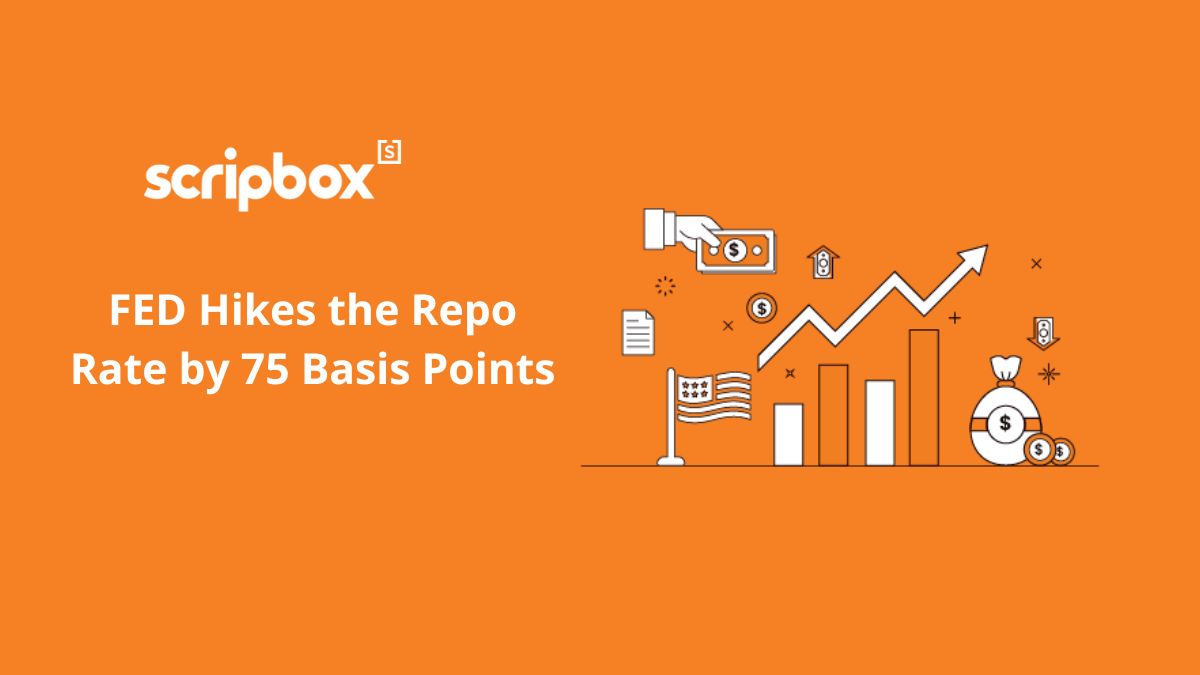What’s the news?
The US Federal Reserve delivered its fourth straight 75 basis-point interest rate increase. The unanimous decision lifts the target for the benchmark federal funds rate in the US to a range of 3.75% to 4%, its highest level since 2008.
What does that mean?
Decoding Powell speak!
“The window of opportunity for a “soft landing” has narrowed but is still possible.”
Inferences:
- Inflation has been sticky, thus demanding higher rates.
- Growth or lack of it is not the priority; inflation is.
- Sticky inflation requires higher interest rates and maybe a faster introduction.
“The “ultimate level” of the Federal Reserve’s benchmark policy rate is likely higher than previously estimated.”
Inferences:
- The Fed needs to be more aggressive than before in controlling inflation
- It could take more time and go slow on the rate hikes, but the fight may be long-drawn, and whenever the inflation is under control, the Fed rates may have risen to far higher levels.
“that time is coming, and it may come as soon as the December meeting,” remarked Powell when he was asked about moving to smaller rate rises from the 75 basis point moves that have defined recent rate hikes. However, he added, “no decision has been made” yet on what action to take at next month’s FOMC gathering.”
Inferences:
- Why unnecessarily spook the markets when seriously, no one knows where inflation will be and where asset values and markets will be?
- More than the softener delivered on the smaller rate hikes front, the higher final level of rates projected should be of concern and the fact that the Fed is ok with a reduced prospect of soft landing (avoiding a crash landing for the US economy).
“It is very premature to be thinking about pausing”, quelling any indication of discontinuing the rate hikes.“
Inferences:
- It just meant that the Fed would not take a wait-and-watch approach.
- It cannot be more hawkish as that would mean instant market derailment when there is a relaxed one-month time to live before taking any harsh decision.
- Our comfort range is inflation within 2%, we are at 8%, and we cannot express it any better.
State of the US Economy
- The unemployment rate at 3.5% is at a 50-year low.
- Hiring is on track for its second-strongest year in government records dating to 1940.
- Employers posted 10.7 million job vacancies in September, up from 10.3 million in August, the Labour Department said on Tuesday.
- The labour market remains tight, and employers are unwilling to let workers go. As a result, layoffs dropped in September to 1.3 million, the fewest since April.
- The U.S. economy grew faster than expected in the July-September quarter with a 2.6% expansion on an annual rate.
- In September, the government’s consumer price index rose a higher-than-expected 0.4 per cent from August and 8.2 per cent from a year earlier.
- Core inflation sans the volatile food and energy costs, in September 2022, climbed 6.6 per cent from a year earlier. That was the most significant such jump in 40 years.
RBI Additional Meeting
On October 27, the Reserve Bank of India (RBI) announced that the Monetary Policy Committee (MPC) would organise an additional meeting on November 3. While there was an expectation that there could be a rate hike to follow up with the US decision, the meeting had more to do with a specific provision, Section 45ZN of the RBI Act, 1934.
Under this act, the central bank must write a letter to the Centre if it fails to maintain the inflation target for three consecutive quarters. The letter should explain the reasons for high inflation, the proposed actions, and the time estimate to bring inflation under control. The next MPC meeting will take place between December 5 and 7.
How does that impact your wealth?
Your main asset classes, as an investor, are Indian Debt and Indian Equity. Let’s make a note of what realities can affect these two asset classes and thus your investments:
- We are not done with the rate hikes, even if the quantum of rate hikes may be much lesser than the US rate hikes. This is because the RBI does not see inflation falling below 4% in the next two years, and there is a desire to provide a real return on fixed-income opportunities.
- While current inflation has been above average based on the last 20 years’ data, the current repo rate has been below average for the previous 20 years. Most analyses suggest that India discount rates, used to value financial assets, should be higher than the present rate because of higher historical difference when compared to US discount rates.
- Besides, the quarterly results (September Quarter) could have been more impressive if the rest of India Inc. matched the Indian banking and financial sector results.
- Investors should keep in mind that Indian equity markets have seen a far lower dip when compared to the US markets which have corrected 18% so far from the peak.
In short, it’s better to follow a prudent asset allocation strategy. Gold has not seen a meaningful rally in the last ten years, and US Equities have seen a significant correction. In comparison, the Indian Equity and Debt markets’ long-term attractiveness remains intact. Any funds needed for essential purposes in the next 3 to 5 years should not be left to the mercies of equity market volatility.











Show comments